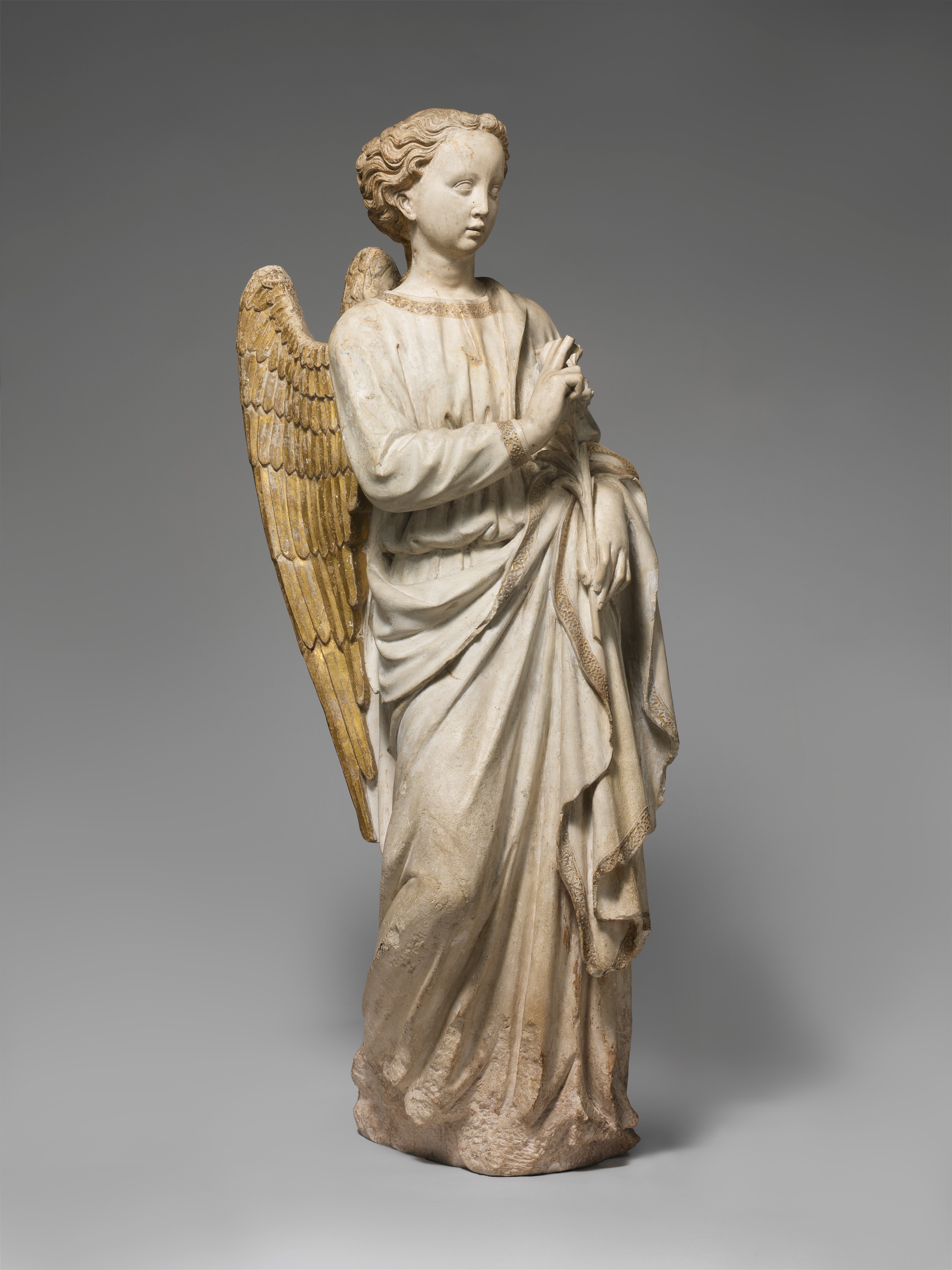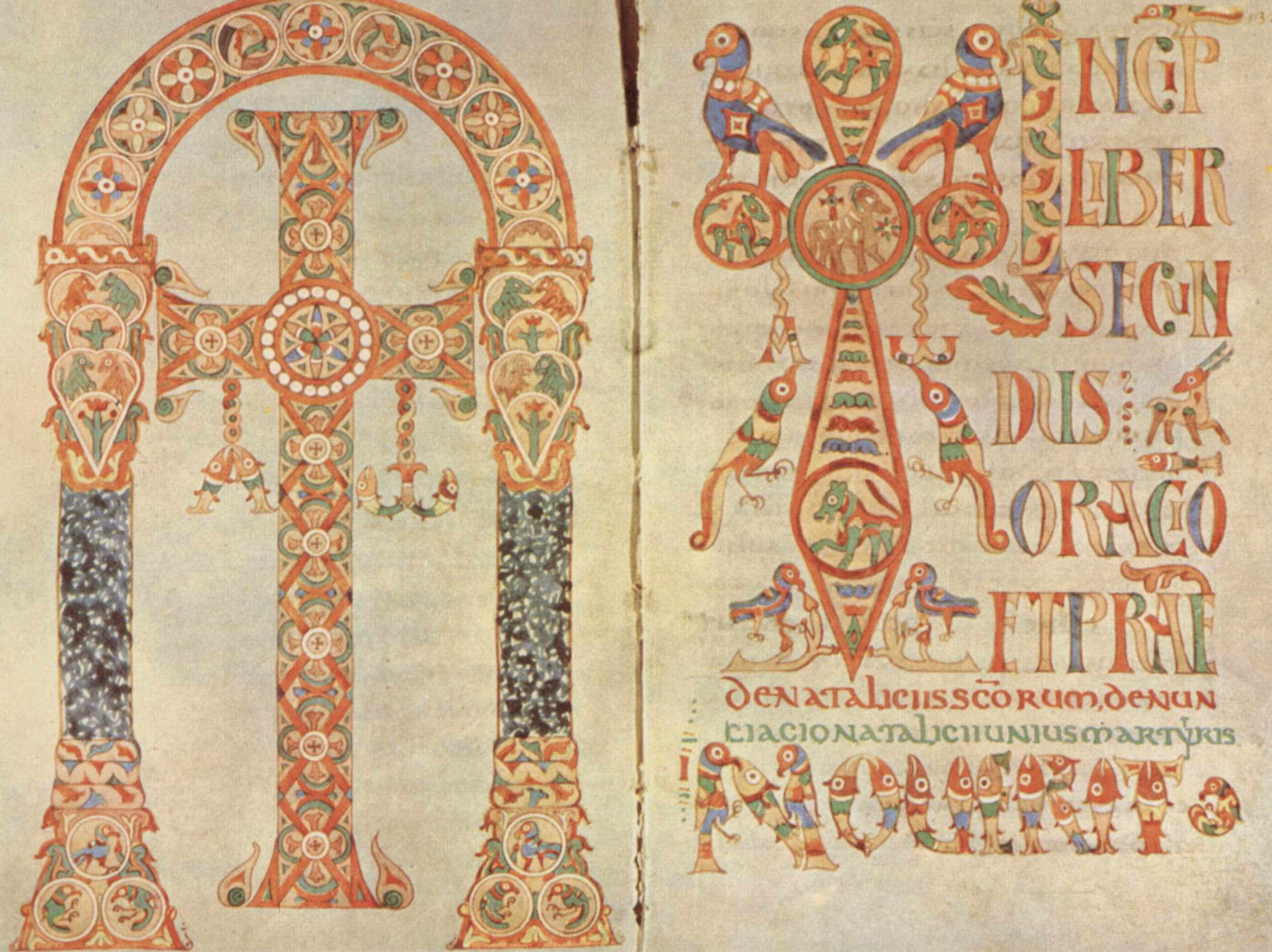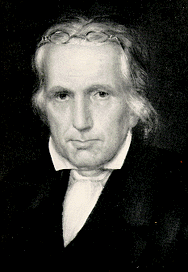|
Doxology
A doxology (Ancient Greek: ''doxologia'', from , ''doxa'' 'glory' and -, -''logia'' 'saying') is a short hymn of praises to God in various forms of Christian worship, often added to the end of canticles, psalms, and hymns. The tradition derives from a similar practice in the Jewish synagogue, where some version of the Kaddish serves to terminate each section of the service. Trinitarian doxology Among Christian traditions a doxology is typically an expression of praise sung to the Holy Trinity: the Father, the Son, and the Holy Spirit. It is common in high hymns for the final stanza to take the form of a doxology. Doxologies occur in the Eucharistic prayers, the Liturgy of the Hours, hymns, and various Catholic devotions such as novenas and the Rosary. ''Gloria in excelsis Deo'' The Gloria in excelsis Deo, also called the Greater Doxology, is a hymn beginning with the words that the angels sang when the birth of Christ was announced to shepherds in . Other verses were added ... [...More Info...] [...Related Items...] OR: [Wikipedia] [Google] [Baidu] |
Gloria In Excelsis Deo
"" (Latin for "Glory to God in the highest") is a Christianity, Christian Hymn#Christian hymnody, hymn known also as the Greater Doxology (as distinguished from the "Minor Doxology" or Gloria Patri) and the Angelic Hymn/Hymn of the Angels. The name is often abbreviated to Gloria in Excelsis or simply Gloria. The hymn begins with the words that the angels sang when announcing the birth of Christ to shepherds in : Douay-Rheims Bible, Douay-Rheims (in Latin). Other verses were added very early, forming a doxology. An article by David Flusser links the text of the verse in Luke with ancient Jewish liturgy. History is an example of the ''psalmi idiotici'' ("private psalms", i.e., compositions by individuals in imitation of the biblical Psalter) that were popular in the 2nd and 3rd centuries. Other surviving examples of this lyric poetry are the Te Deum and the Phos Hilaron. In the 4th century it became part of morning prayers, and is still recited in the Byzantine Rite Matins, Or ... [...More Info...] [...Related Items...] OR: [Wikipedia] [Google] [Baidu] |
Hymn
A hymn is a type of song, and partially synonymous with devotional song, specifically written for the purpose of adoration or prayer, and typically addressed to a deity or deities, or to a prominent figure or personification. The word ''hymn'' derives from Greek language, Greek (''hymnos''), which means "a song of praise". A writer of hymns is known as a hymnist. The singing or composition of hymns is called hymnody. Collections of hymns are known as hymnals or hymn books. Hymns may or may not include instrumental accompaniment. Polyhymnia is the Greco/Roman goddess of hymns. Although most familiar to speakers of English in the context of Christianity, hymns are also a fixture of other major religious groups, world religions, especially on the Indian subcontinent (''stotras''). Hymns also survive from antiquity, especially from Egyptian and Greek cultures. Some of the oldest surviving examples of notated music are hymns with Greek texts. Origins Ancient Eastern hymns include th ... [...More Info...] [...Related Items...] OR: [Wikipedia] [Google] [Baidu] |
Angel
An angel is a spiritual (without a physical body), heavenly, or supernatural being, usually humanoid with bird-like wings, often depicted as a messenger or intermediary between God (the transcendent) and humanity (the profane) in various traditions like the Abrahamic religions. Other roles include protectors and guides for humans, such as guardian angels and servants of God. In Western belief-systems the term is often used to distinguish benevolent from malevolent intermediary beings. Emphasizing the distance between God and mankind, revelation-based belief-systems require angels to bridge the gap between the earthly and the transcendent realm. Angels play a lesser role in monistic belief-systems, since the gap is non-existent. However, angelic beings might be conceived as aid to achieve a proper relationship with the divine. Abrahamic religions describe angelic hierarchies, which vary by religion and sect. Some angels have specific names (such as Gabriel or Mich ... [...More Info...] [...Related Items...] OR: [Wikipedia] [Google] [Baidu] |
Holy Trinity
The Trinity (, from 'threefold') is the Christian doctrine concerning the nature of God, which defines one God existing in three, , consubstantial divine persons: God the Father, God the Son (Jesus Christ) and God the Holy Spirit, three distinct persons ('' hypostases'') sharing one essence/substance/nature ('' homoousion''). As the Fourth Lateran Council declared, it is the Father who s, the Son who is , and the Holy Spirit who proceeds. In this context, one essence/nature defines God is, while the three persons define God is. This expresses at once their distinction and their indissoluble unity. Thus, the entire process of creation and grace is viewed as a single shared action of the three divine persons, in which each person manifests the attributes unique to them in the Trinity, thereby proving that everything comes "from the Father", "through the Son", and "in the Holy Spirit". This doctrine is called Trinitarianism, and its adherents are called Trinitarians, whil ... [...More Info...] [...Related Items...] OR: [Wikipedia] [Google] [Baidu] |
Eucharistic Prayer
The Anaphora (), Eucharistic Prayer, or Great Thanksgiving, is a portion of the Christian liturgy of the Eucharist in which, through a prayer of thanksgiving, the elements of bread and wine are consecrated. The prevalent historical Roman Rite form is called the " Canon of the Mass". "Anaphora" is a Greek word () meaning a "carrying up", thus an "offering" (hence its use in reference to the offering of sacrifice to God). (This sense is distinct from the usage of "anaphora" in rhetoric and linguistics to mean a "carrying back".) In the sacrificial language of the Greek version of the Hebrew Bible known as the Septuagint, (prospherein) is used of the offerer's bringing the victim ''to'' the altar, and (anapherein) is used of the priest's offering ''up'' the selected portion upon the altar (see, for instance, , , , ). Elements To describe the structure of the Anaphoras as it became standardized from the 4th century, we can look at the structure of the anaphoras in the Antiochene ... [...More Info...] [...Related Items...] OR: [Wikipedia] [Google] [Baidu] |
Ancient Greek
Ancient Greek (, ; ) includes the forms of the Greek language used in ancient Greece and the classical antiquity, ancient world from around 1500 BC to 300 BC. It is often roughly divided into the following periods: Mycenaean Greek (), Greek Dark Ages, Dark Ages (), the Archaic Greece, Archaic or Homeric Greek, Homeric period (), and the Classical Greece, Classical period (). Ancient Greek was the language of Homer and of fifth-century Athens, fifth-century Athenian historians, playwrights, and Ancient Greek philosophy, philosophers. It has contributed many words to English vocabulary and has been a standard subject of study in educational institutions of the Western world since the Renaissance. This article primarily contains information about the Homeric Greek, Epic and Classical periods of the language, which are the best-attested periods and considered most typical of Ancient Greek. From the Hellenistic period (), Ancient Greek was followed by Koine Greek, which is regar ... [...More Info...] [...Related Items...] OR: [Wikipedia] [Google] [Baidu] |
Lutherans
Lutheranism is a major branch of Protestantism that emerged under the work of Martin Luther, the 16th-century German friar and reformer whose efforts to reform the theology and practices of the Catholic Church launched the Reformation in 1517. The Lutheran Churches adhere to the Bible and the Ecumenical Creeds, with Lutheran doctrine being explicated in the Book of Concord. Lutherans hold themselves to be in continuity with the apostolic church and affirm the writings of the Church Fathers and the first four ecumenical councils. The schism between Roman Catholicism and Lutheranism, which was formalized in the Edict of Worms of 1521, centered around two points: the proper source of authority in the church, often called the formal principle of the Reformation, and the doctrine of justification, the material principle of Lutheran theology. Lutheranism advocates a doctrine of justification "by Grace alone through faith alone on the basis of Scripture alone", the doctrine ... [...More Info...] [...Related Items...] OR: [Wikipedia] [Google] [Baidu] |
Anglicans
Anglicanism, also known as Episcopalianism in some countries, is a Western Christianity, Western Christian tradition which developed from the practices, liturgy, and identity of the Church of England following the English Reformation, in the context of the Protestant Reformation in Europe. It is one of the largest branches of Christianity, with around 110 million adherents worldwide . Most are members of national or regional Ecclesiastical province#Anglican Communion, ecclesiastical provinces of the international Anglican Communion, one of the largest Christian bodies in the world, and the world's third-largest Christian communion. When united and uniting churches, united churches in the Anglican Communion and the breakaway Continuing Anglican movement were not counted, there were an estimated 97.4 million Anglicans worldwide in 2020. Adherents of Anglicanism are called ''Anglicans''; they are also called ''Episcopalians'' in some countries. The provinces within the Anglican ... [...More Info...] [...Related Items...] OR: [Wikipedia] [Google] [Baidu] |
Presbyterians
Presbyterianism is a historically Reformed Protestant tradition named for its form of church government by representative assemblies of elders, known as "presbyters". Though other Reformed churches are structurally similar, the word ''Presbyterian'' is applied to churches that trace their roots to the Church of Scotland or to English Dissenter groups that were formed during the English Civil War, 1642 to 1651. Presbyterian theology typically emphasises the sovereignty of God, the authority of the Scriptures, and the necessity of grace through faith in Christ. Scotland ensured Presbyterian church government in the 1707 Acts of Union, which created the Kingdom of Great Britain. In fact, most Presbyterians in England have a Scottish connection. The Presbyterian denomination was also taken to North America, Australia, and New Zealand, mostly by Scots and Scots-Irish immigrants. Scotland's Presbyterian denominations hold to the Reformed theology of John Calvin and his i ... [...More Info...] [...Related Items...] OR: [Wikipedia] [Google] [Baidu] |
Reformed Baptist
Reformed Baptists, also called Particular Baptists, or Calvinist Baptists, are Baptists that hold to a Calvinism, Calvinist soteriology (salvation belief teached by John Calvin). The name "Reformed Baptist" dates from the latter part of the 20th century to denote Baptists who retained a Baptist ecclesiology, and reaffirmed Reformed biblical theology, such as Covenant theology. Calvinist Baptists adhere to varying degrees of Calvinism, Reformed theology, ranging from simply embracing the Calvinism#Five_Points_of_Calvinism, Five Points of Calvinism, to accepting the Baptist covenant theology; all Reformed Baptists reject the classical Reformed teaching on infant baptism, meaning that they reject infants as the proper subjects of baptism. The first Calvinist Baptist church was formed in the 1630s. Reformed Baptists have produced two major confessions of faith as summary of their beliefs: The ''1689 Baptist Confession of Faith, Second London Confession of Faith'' (1689) and the ' ... [...More Info...] [...Related Items...] OR: [Wikipedia] [Google] [Baidu] |
Disciples Of Christ
The Christian Church (Disciples of Christ) is a mainline Protestant Christian denomination in the United States and Canada. The denomination started with the Restoration Movement during the Second Great Awakening, first existing during the 19th century as a loose association of churches working toward Christian unity. These slowly formed quasi-denominational structures through missionary societies, regional associations, and an international convention. In 1968, the Disciples of Christ officially adopted a denominational structure. At that time, Christian churches and churches of Christ, a group of churches left in order to remain nondenominational. The denomination is referred to by several versions of its full name, including "Disciples of Christ", "Disciples", "Christian Church", "CC(DOC)", and "DOC". The Christian Church was a charter participant in the formation of the World Council of Churches (WCC) and of the Federal Council of Churches (now the National Council of Church ... [...More Info...] [...Related Items...] OR: [Wikipedia] [Google] [Baidu] |








